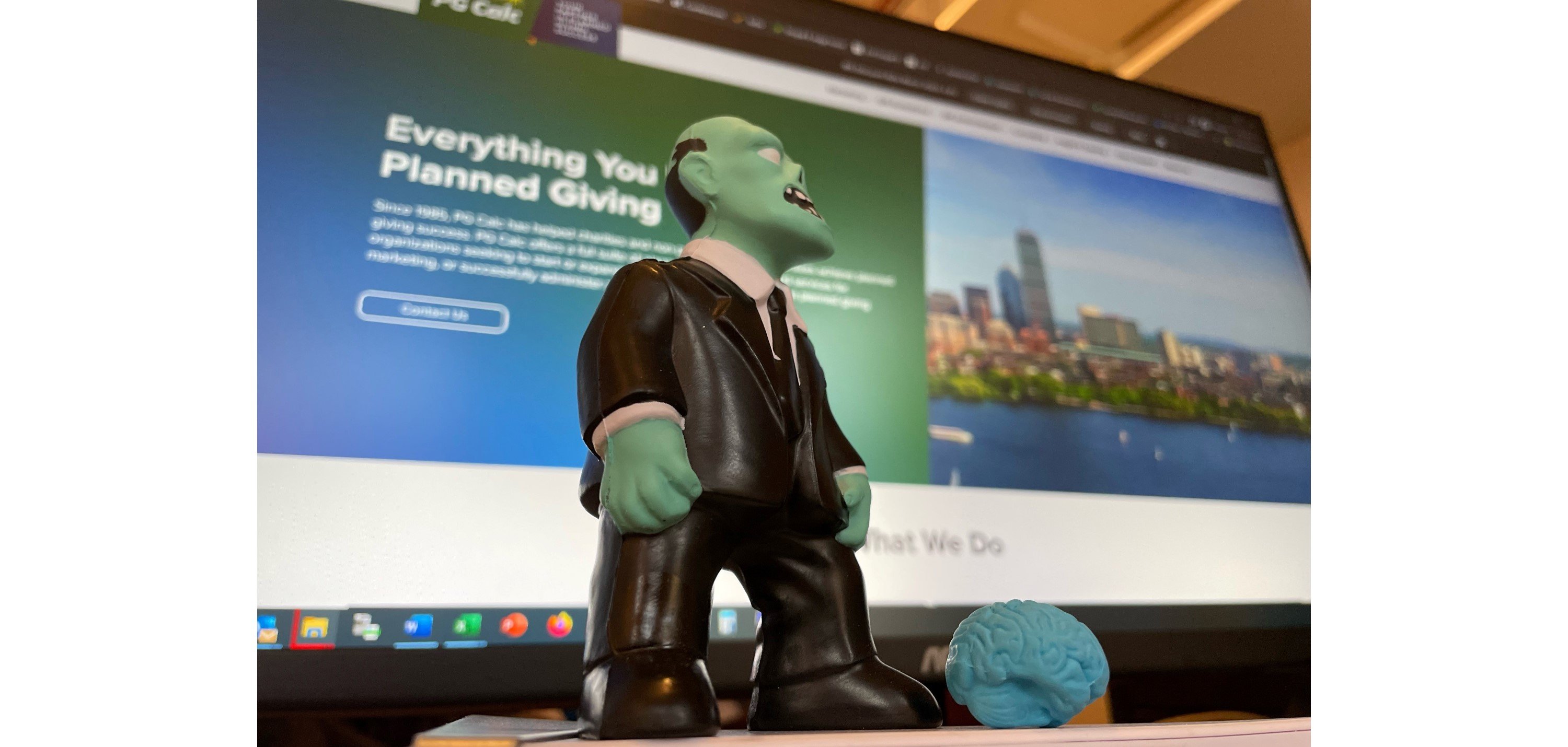BDQ #2: I Don’t Have an RMD, So Why Would I Want a QCD?
|
The BDQ (Big Dumb Question) We’ve all been there: at some point during a presentation someone says, “This may be a dumb question, but…” and the presenter (hopefully in a gracious tone of voice) says, “There’s no such thing as a dumb question,” before providing the obvious answer. But sometimes, just to yourself, you have to admit you were wondering about the same thing. That’s the idea behind this occasional series we’re calling “The Big Dumb Question” (or BDQ). Our aim is to provide easy to understand answers to basic gift planning questions – the kinds of questions you may be reluctant to ask. We’ve got a list of topics in mind (see below). |
I Don’t Have an RMD, So Why Would I Want a QCD? “I prefer the large confusion to the small certainty,” said poet John Ciardi. That’s a healthy approach when thinking about Qualified Charitable Distributions (QCD) and Required Minimum Distributions (RMD). There is a large confusing array of initials – RMDs and QCDs, QRPs and IRAs, to name a few. There are different ages – 70½, 72, 73, 75. But here’s the small certainty: a Qualified Charitable Distribution (QCD) from an Individual Retirement Account (IRA) is a great way for anyone age 70½ or older to make a charitable contribution. If your donor happens to have Required Minimum Distributions (RMD) too, there’s good news: a QCD gift can help satisfy their RMD without creating taxable income. |
What Is a Qualified Retirement Plan (QRP)? (Hint: It’s more than just an IRA.)
The “Employee Retirement Income Security Act” (ERISA) of 1974 created several Qualified Retirement Plans (QRP), the most well-known of which are the 401(k), 403(b), and the IRA. Most QRPs operate in a similar way: pre-tax compensation is deposited in a custody account where it is invested on a tax deferred basis to provide a source of income during retirement. Contrary to what some may think, QRPs do not save income taxes – they merely defer when the tax must be paid. So, it should come as no surprise, when money in a QRP is finally withdrawn it is subject to income tax.
What Is a Required Minimum Distribution (RMD) and Why Do I Have to Pay Taxes on It?
Following enactment of ERISA, untaxed income accumulated in QRPs with many individuals using their QRPs to stockpile wealth for heirs. The Tax Reform Act of 1986 introduced the Required Minimum Distribution (RMD) to emphasize QRPs as a source of retirement income, discourage the accumulation of untaxed income in QRPs, and to generate tax revenue by requiring taxable withdrawals.
Conceptually, the RMD is straight forward: each year the individual must divide the balance in her QRP by her life expectancy and withdraw that amount. The RMD withdrawal is taxed as ordinary income. The RMD must be taken – and the income tax paid – regardless of whether she needs or wants the income. Failure to take the RMD results in a 25% penalty in addition to the income tax.
For many years the RMD starting age was 70½. The SECURE Act increased the age to 72 beginning in 2020. Then, SECURE Act 2.0 increased the RMD age to 73 beginning in 2023 and will increase it again to 75 beginning in 2033.
What Is a Qualified Charitable Distribution (QCD) and How Does That Work?
The Qualified Charitable Distribution (QCD) – sometimes called an “IRA Charitable Rollover” – allows an individual age 70½ or older to direct a distribution from his IRA account directly to charity. Unlike other withdrawals from an IRA, there is no income tax due on a QCD withdrawal. Although QCDs are allowed only from IRAs, most other Qualified Retirement Plans can make tax-free rollovers to an IRA from which a QCD gift can then be made.
QCD gifts are an excellent opportunity, especially for donors who do not itemize, to receive a tax benefit for making a charitable gift. Although there is no income tax deduction for a QCD gift, there is no income tax on the withdrawal either. In addition – and even better – a QCD withdrawal counts toward the individual’s RMD without creating taxable income.
So, Tell Me Again, Why Would I Make a QCD If I Don’t Have an RMD?
QCDs and RMDs are separate and distinctly different. You can make a QCD gift without having an RMD. You can have an RMD without making a QCD gift.
The QCD provides an opportunity to fulfill part or all of an RMD while at the same time making a charitable contribution. If a donor does not need or want their RMD income, a QCD allows them to avoid taxation on their RMD.
To be clear: donors age 70½ or older can take full advantage of a QCD gift even though they don’t have an RMD. A QCD gift is a tax-smart way to make a contribution with pre-tax dollars, which can be especially appealing to donors who do not itemize. Most taxpayers don’t have to worry about a taxable RMD until they are age 73, but, if they have an RMD, a QCD gift can help reduce the taxes due on their RMD.
|
More Big Dumb Questions Here are some of the BDQs we have addressed or plan to:
If there are other BDQs you’d like answered, let us know. You can remain anonymous, of course! |



Submit a Comment